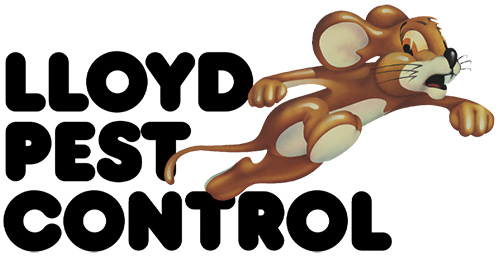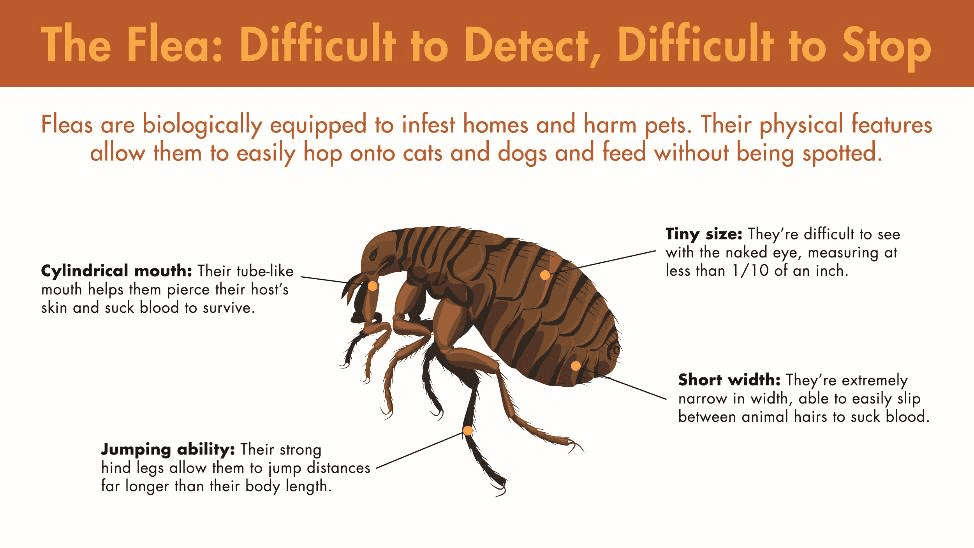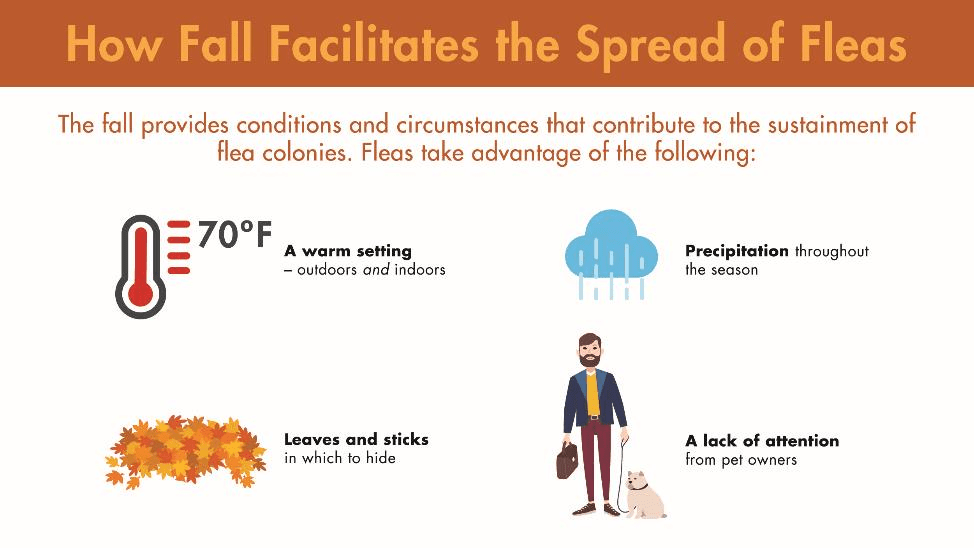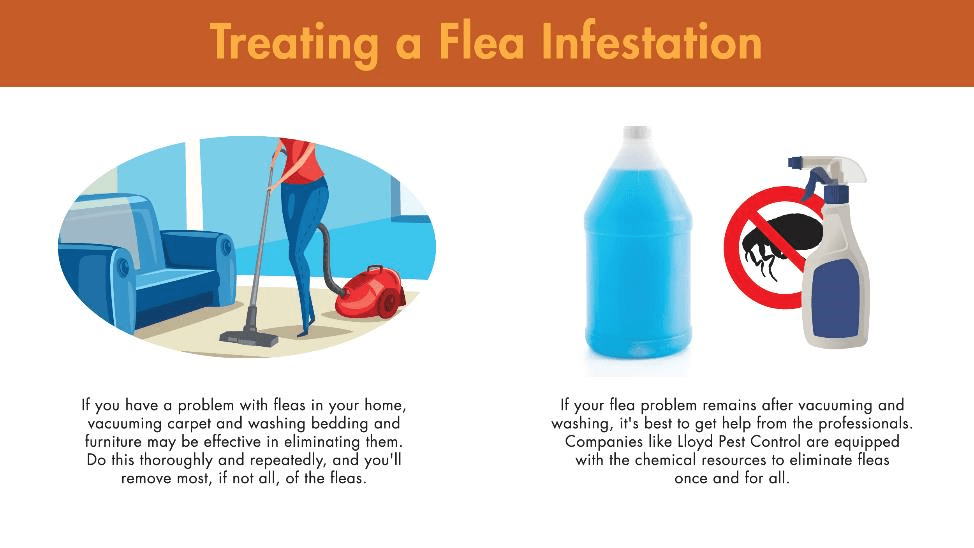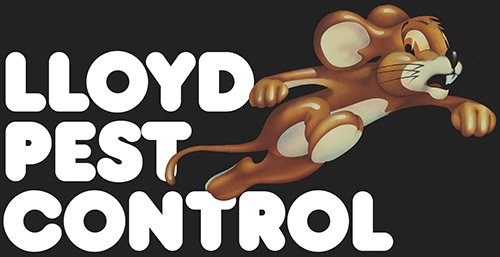- Termite Control
- ResidentialCommon Residential Pests
Lloyd Pest Control is the leader in bed bug and termite control in San Diego, Orange and Riverside counties. We’re so certain that you’ll be ecstatic with our service that we’re proud to offer a 100% money-back guarantee!

- BusinessCommercial Pest Control
Your business is your business, but when you’ve got pests, it’s our business. At Lloyd Pest Control, we can help you keep doing business without the unplanned guests.

- Service Areas
- Why Lloyd?
- Free Quote
Fleas in Fall: Your Pet’s Biggest Pet Peeve
Fleas
Fleas are no fun for your pets. This bloodsucking pest is known to give cats and dogs a hard time, and the end of the summer doesn’t bring any relief. During the fall in Southern California, they remain a threat, hanging out in yards and finding ways indoors by latching onto pets. To avoid flea problems as temperatures drop and pumpkin-flavored foods become the norm, equip yourself with knowledge of this pest’s autumn whereabouts.
Fleas: The Problematic Parasite
A parasitic insect, the flea is the sole member of the insect order Siphonaptera. The order’s name derives from the Greek words “siphon,” meaning tube, and “aptera,” meaning wingless. Together, they aptly describe the flea – a non-flying pest that, using its cylindrical mouth, sucks blood from hosts. They most often feed on pets like cats and dogs, and occasionally people as well.
Fleas are hard to control, and biology has a lot to do with it. They’re practically invisible to the eye, measuring at a length of around 1/10 of an inch. While they don’t fly, they have impressive jumping power, as their strong hind legs allow them to leap over 50 times their body length. This is a big help when seeking hosts that are high off the ground; your golden retriever or German shepherd is no match for the mobility of the flea.
A Walking (and Hopping) Health Hazard
It makes sense, then, that fleas should be of grave concern for your pets. You might have already dealt with them in the past. The symptom that tips most people off to a flea infestation is their pet’s constant scratching. This is a result of flea allergy dermatitis, as flea bites make your pet’s skin quite itchy.
That’s not the worst of it, though. Fleas may also cause the following health complications:
- Tapeworm: If your pet accidentally swallows a flea, they could develop a tapeworm that robs them of valuable nutrients.
- Anemia: Rapid blood loss, or anemia, may occur if fleas drain too much blood from your pet, causing fatigue and weakness.
- Bartonella infection: Also known as “cat scratch fever,” this bacterial infection may occur in cats, dogs, or even humans, resulting in fever, vomiting, and fatigue.
Why Do Fleas Love the Fall?
It’s easy to think that fleas are solely a summer issue like most pests. But this bothersome bloodsucker is different than most. Because a variety of conditions make it easy for them to sustain colonies, one could argue that the risk of a flea infestation is actually heightened in the fall.
Here are a few reasons why fleas thrive this time of year:
- Southern California remains warm during the fall season, as temperatures hover around 70 degrees Fahrenheit – perfect weather for colonies to thrive.
- Larvae are highly hygrotactic (meaning they respond positively to moisture), and precipitation tends to increase during the fall.
- Fallen leaves and branches accumulate in yards, making for a humid habitat for flea colonies.
- Indoor temperatures increase as air conditioners are turned off and windows are closed, providing a warm and stable environment for eggs to hatch.
- Pets begin to grow their winter coats, which allow plenty of cover for fleas as they feed.
More than anything, a huge reason for fleas’ fall frenzy is because they’re underestimated. Most pet owners tend to give their pets preventative treatments solely in the spring and summer, leaving them vulnerable when October hits. A firm understanding of fleas’ potential for harm is a good starting point, and it may prevent them from getting the upper hand.
The Flea’s Autumn Escapades
If you spot fleas on your pet, know that you’re only seeing the tip of the iceberg. Take a look around, and you may find that the rest of the population is scattered in places throughout the house and outside. With a bit of help from the fall conditions, flea infestations can spread fast. Here’s how:
- Finding a Host: The fall offers leaves grass, and other moist, covered areas for fleas to reside. From there, they look to hitch a ride on passing pets, putting their incredible jumping skills to good use. Fleas tend to latch onto places that aren’t groomed – for dogs, around the armpits and hips, and for cats, around the neck. They then go wherever the pet goes, finding their way indoors as a result.
- Setting Up Camp: Fleas are constantly expanding their colonies, and the home offers conditions ripe for reproduction. It helps that, during the fall, it’s often warmer indoors than outdoors. After hitchhiking inside, adult fleas feed on their host’s blood and prepare to lay eggs. They also tend to their newly hatched eggs, found outside of the pet in nearby locations.
- Reproducing in Mass: As fleas begin reproduction, adults lay eggs on the host, which soon fall to the ground. They end up wherever the pet spends most of its time, usually on bedding, furniture, and carpet. The life cycle continues as the eggs hatch into larvae, form into cocoons, and then become adults. During a fall period that stunts their growth, the entire cycle is often completed in less than three weeks.
Prevention and Treatment
With the fast spread of fleas, it’s important to take care of them before things get out of hand. Eliminate the root of the problem – bag leaves and sticks that may bring them to your yard in the first place. If they’ve already made it indoors, get rid of fleas by washing your pet’s bedding thoroughly and vacuuming carpet and furniture. Treat your cat or dog with flea medicine, and get them a preventative for future protection.
If fleas still don’t seem to go away, don’t fret. Many chemical pest control methods are proven to work, including residual pesticides. This won’t be enough against hardy cocoons, but another solution exists just for that. Chemical growth regulators prevent larvae from turning into cocoons – a surefire way of eliminating any fleas remaining in your home.
Stop Fleas This Fall with Lloyd Pest Control
Fleas can survive year-round in Southern California, and the fall is an ideal time for them. That’s because falling leaves, wet weather, cozy homes, and – most importantly – active pets contribute to their colonies’ growth. The conditions here are perfect for this so-called “fall flea surge.” If your infestation has grown out of control, Lloyd Pest Control is capable of combating this bloodsucking parasite. We offer flea control in Southern California proven to reduce their numbers – and their risk to your pets.
For defense against fleas and other fall pests, contact us.
